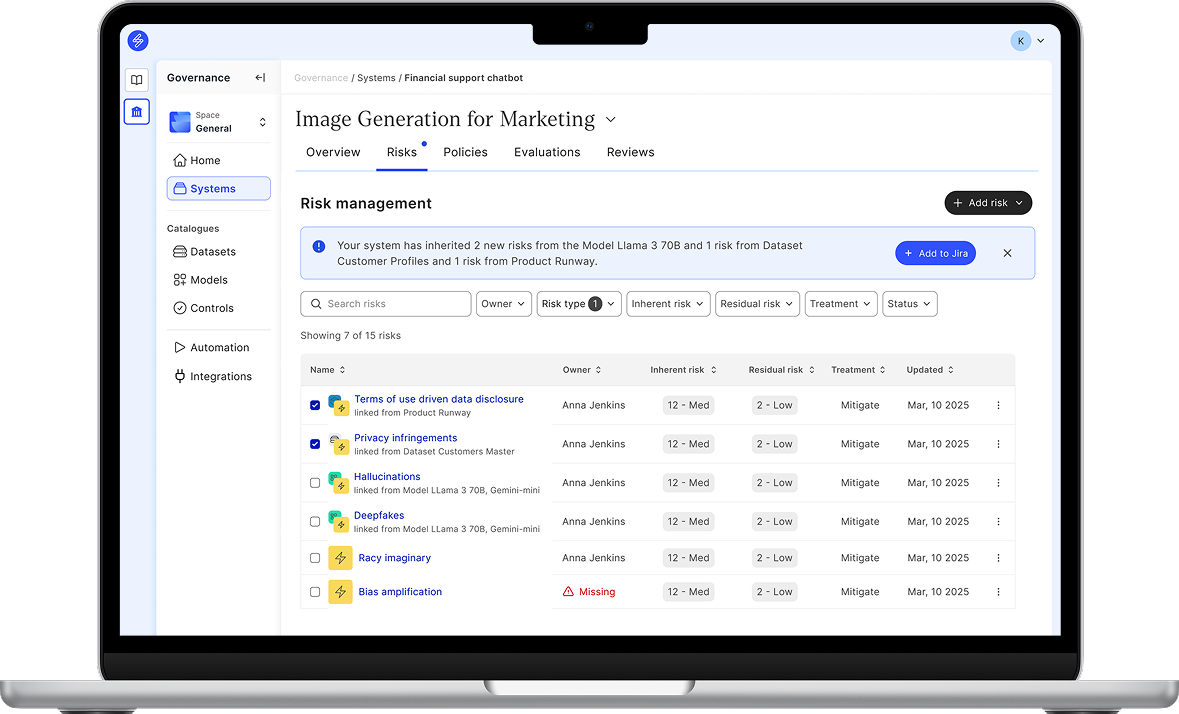Using Model Catalogue
This guideline will help you to activate and use Model Catalogue. Model Catalogue is a company-specific catalogue for the models that are developed and finetuned in AI/ML Development and MLOps platforms. Currently Saidot support integration and governance of models developed in Microsoft Azure Machine Learning, Azure AI Services and Azure OpenAI Services.
The Model Catalogue offers Data Scientists and AI developer possibility to govern their ML & AI models at Saidot by
Integrate to ML & AI development or MLOps platform to govern models at Saidot
Import models through integration, including basic model metadata
Add model specific governance information including description of performance, limitations, allowed and not allowed use.
Manage links to systems, datasets and model specific risks
Enabling Integrations in Admin Interface
Saidot Azure integrations are enabled by Admins using Admin interface.
Step 1. Enable Azure Cloud Integrations
Admins enable Azure Cloud integrations in Admin interface by activating the respective toggle.
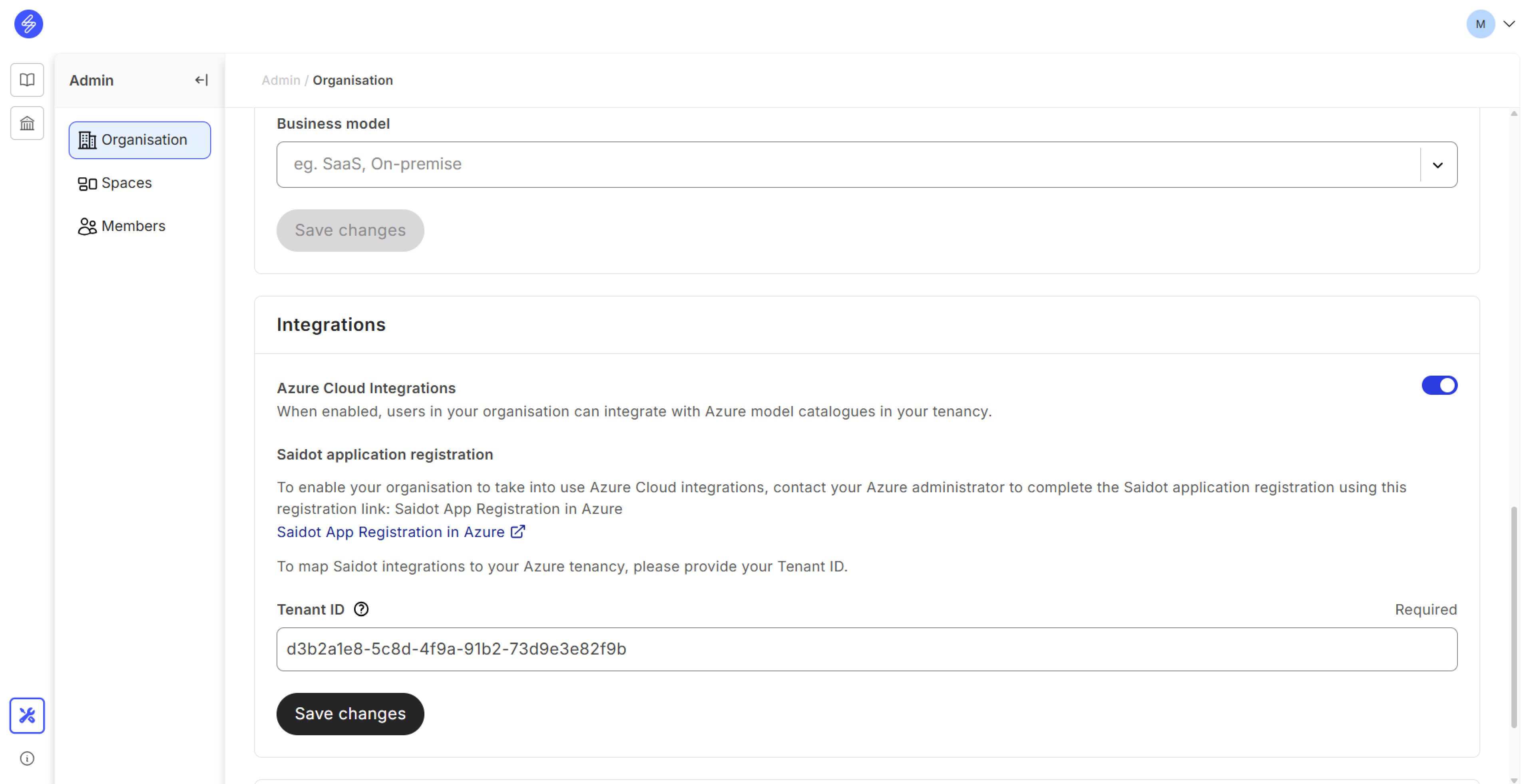
Step 2. Register Saidot App in Azure
Admins with Azure Admin access rights can now follow the link provided in the admin UI to register Saidot app in your Azure environment.
Step 3. Map to Azure tenancy
Next, Admins will need to map the Saidot integration to the right tenancy in Azure by providing tenant id.
Step 4. Assign Reader Role
Finally, Saidot Model Catalogue requires permission to read from the resources that you want to connect to. Assign the Microsoft Reader role to allow Saidot access and retrieve model information using the following steps:
Go to Azure Portal and sign in with your credentials
Select the Target Resource or Resource Group
Go to Access Control (IAM)
Add Role Assignment Reader to Saidot application
For detailed guidance on configuring these permissions, visit Assign Roles in Azure.
Connecting to Azure model registers
Integrate to ML & AI development or MLOps platform to govern models at Saidot by following these steps.
Step 1. Select Integrations
Navigate to Integrations and select Add connection to start the integration flow. Note that integrations are Space-specific.
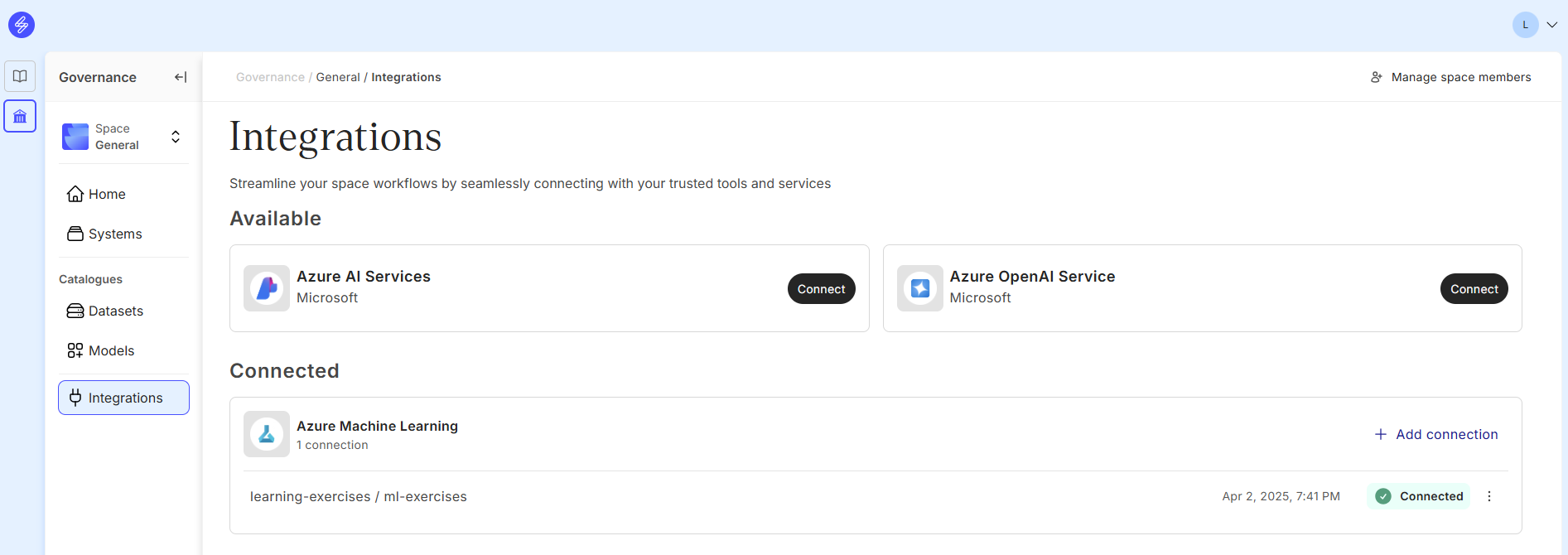
Step 2. Connect to Azure Service Resource
For the integration, use the full Resource ID or a Subscription ID, Resource Group and Workspace name.
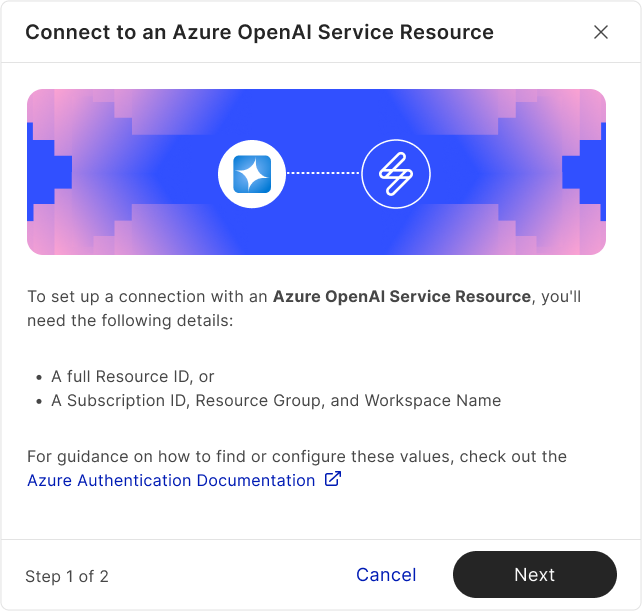
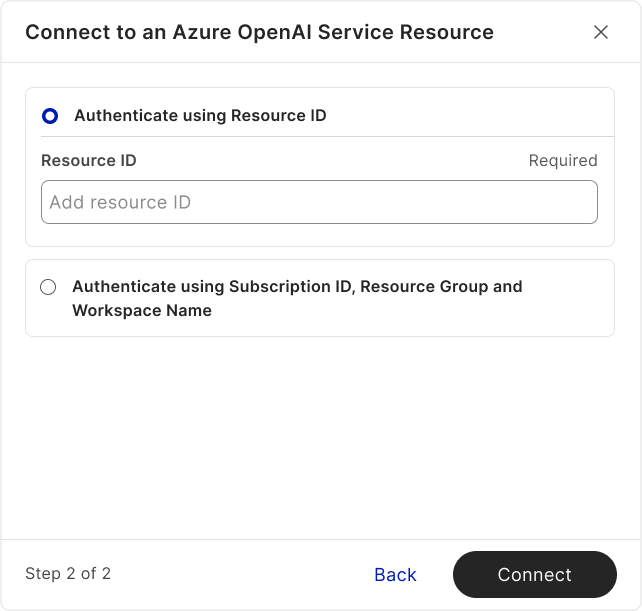
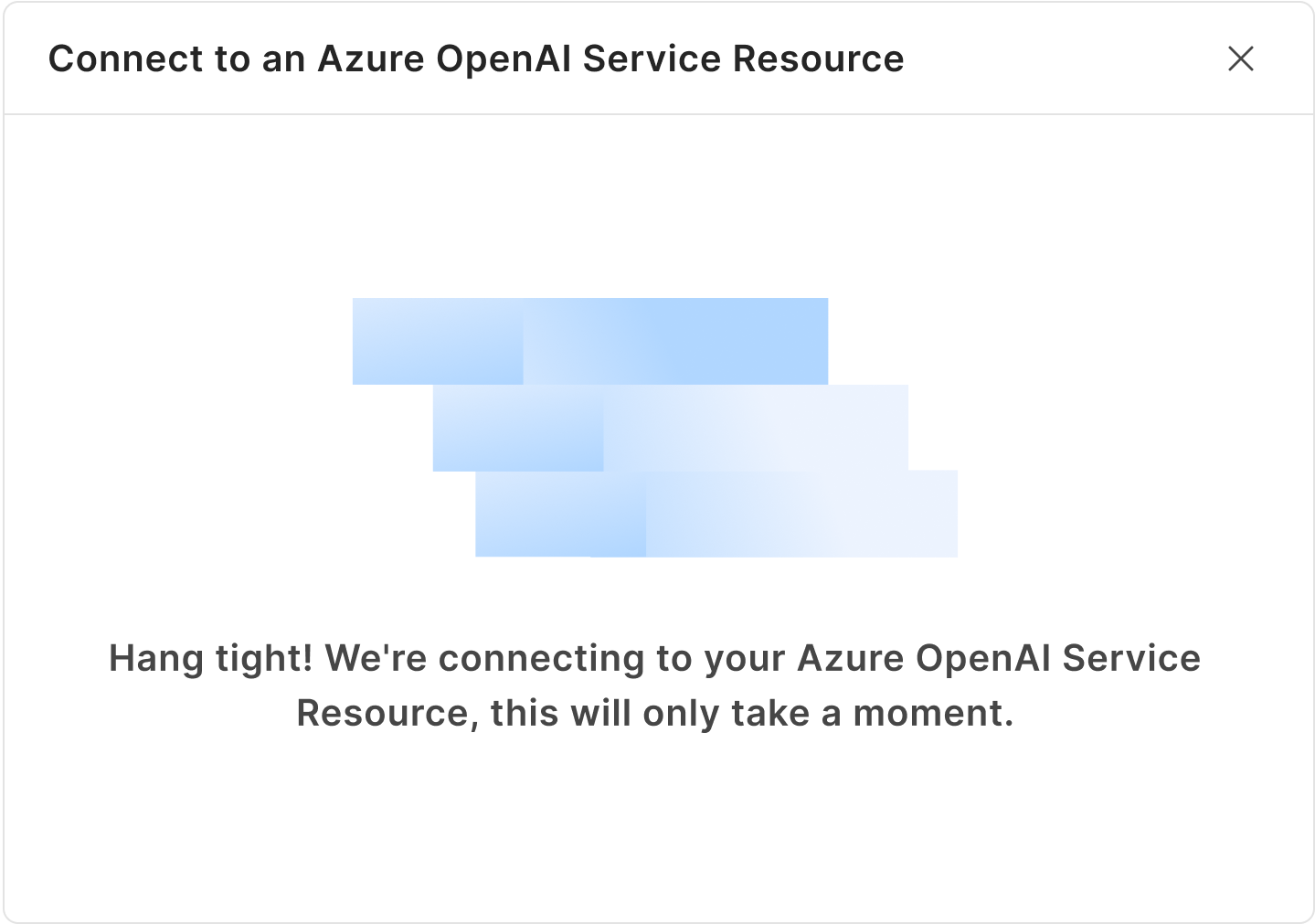
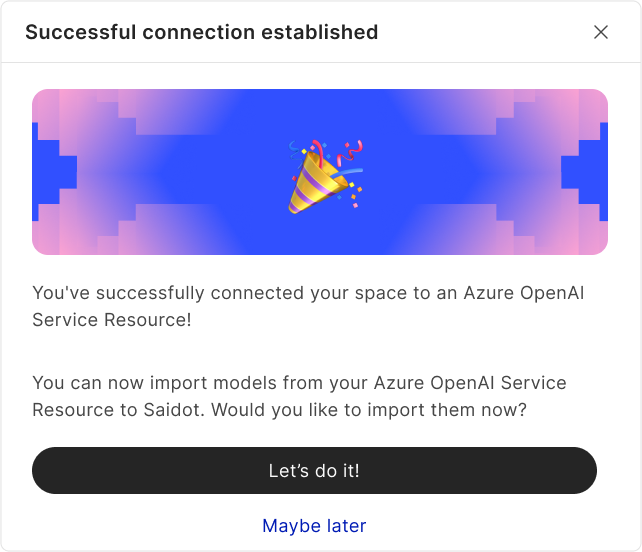
Model Catalogue
After successful integration, models from Azure OpenAI Service, Azure AI Services and Azure Machine Learning can be imported and governed at Saidot.
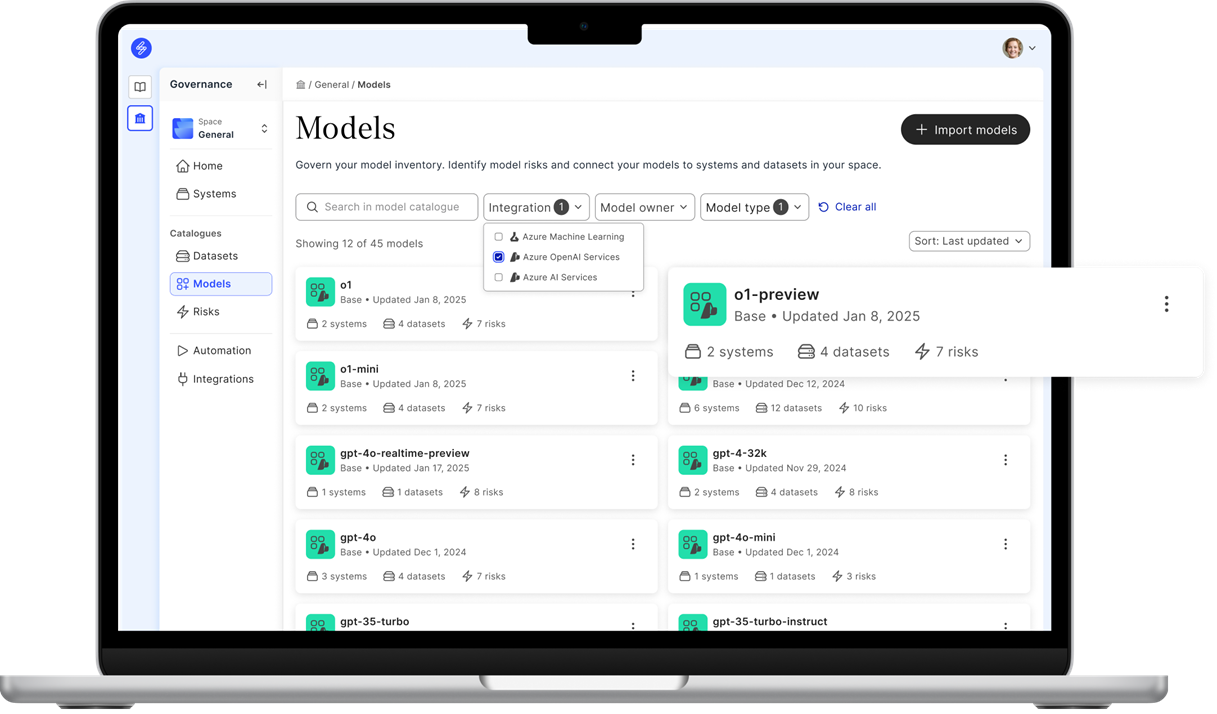
Step 1. Import models
Start the model import by selecting Models and Import Models. Wait for Saidot to get the models to be imported from Azure. This might take a couple of minutes.
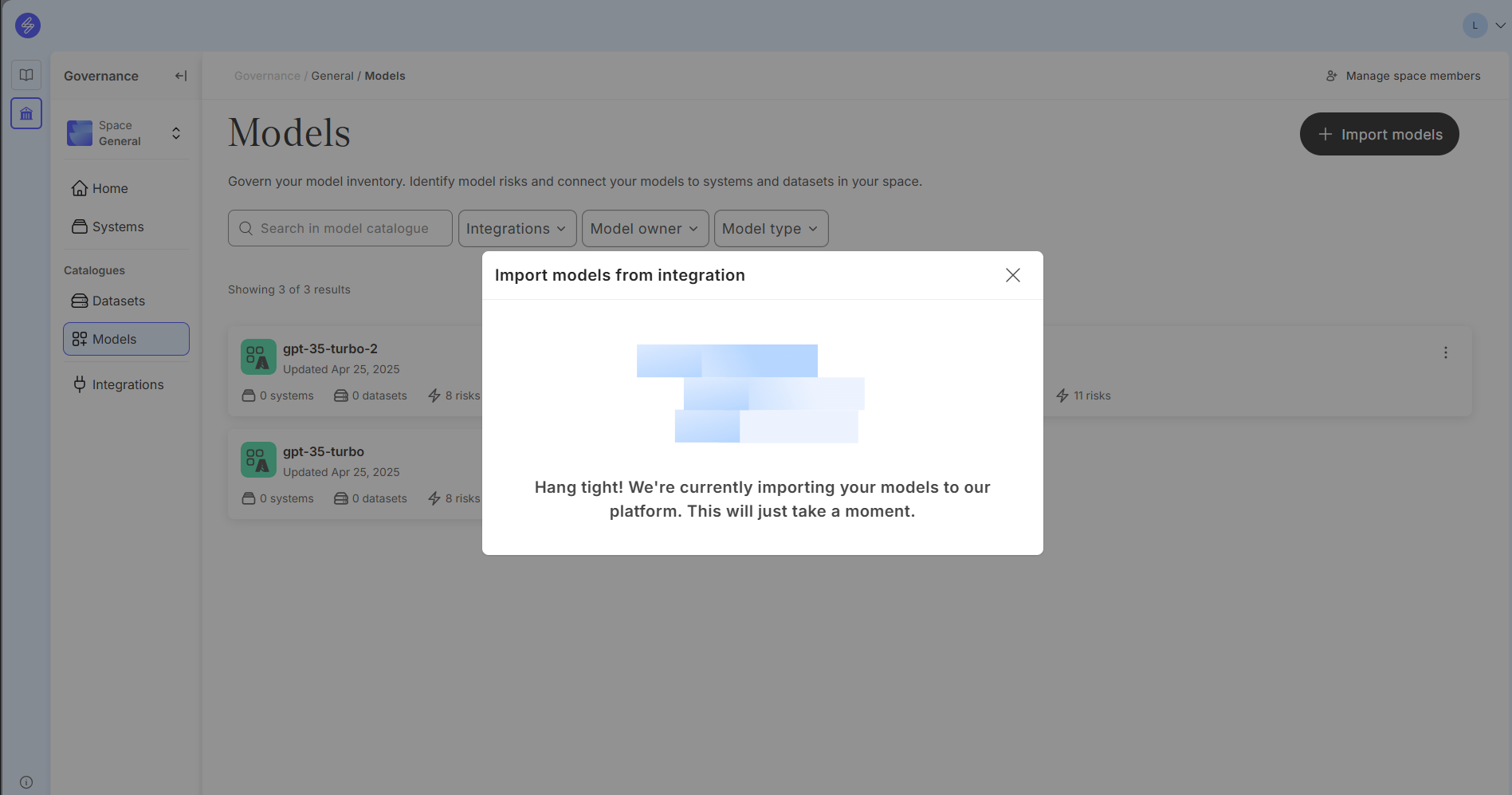
Select the models to be imported to the Model Catalogue.
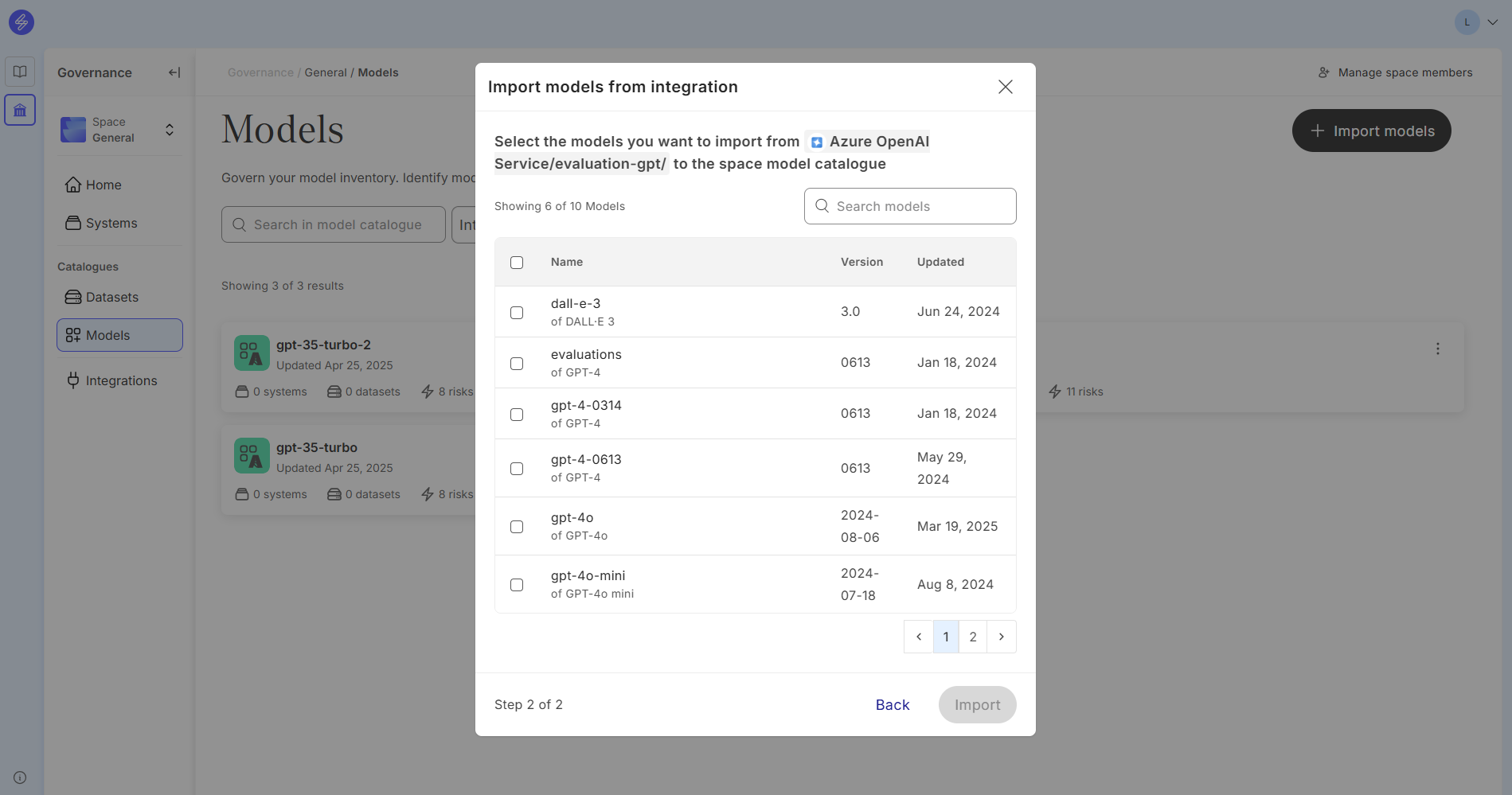
Imported models will be visible in the Model Catalogue.
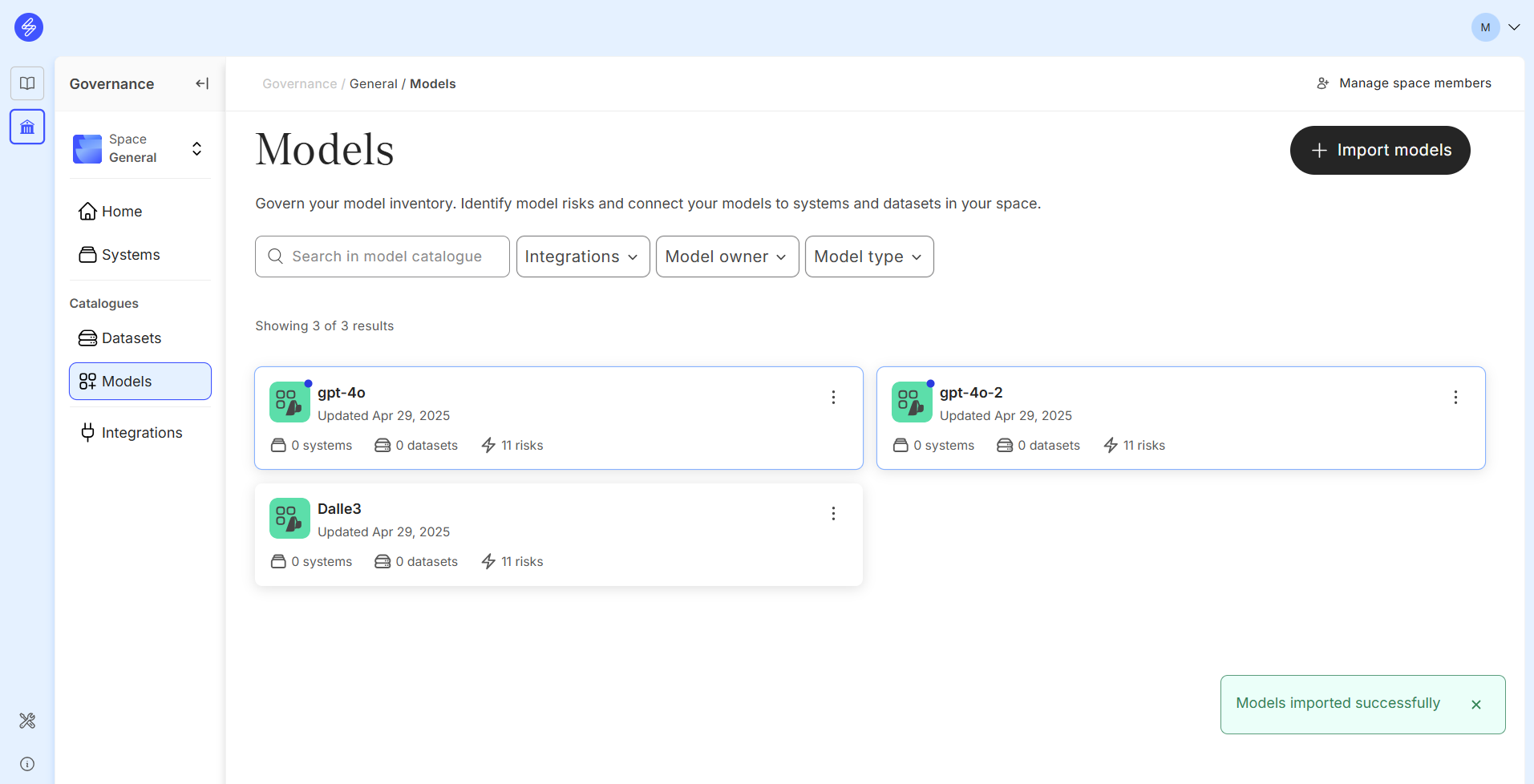
Step 2. View Model Card
View the deployment and model details in the Model Card. This information is integrated from Azure directly.

Step 3. Link datasets
Link datasets that has been used to train, validate or test the model deployment.
Step 4. Govern model
Oversee and manage your model on the Model Governance section including
Approvals and Model owner
Capabilities, performance and limitations
Accepted and unaccepted use
Documents
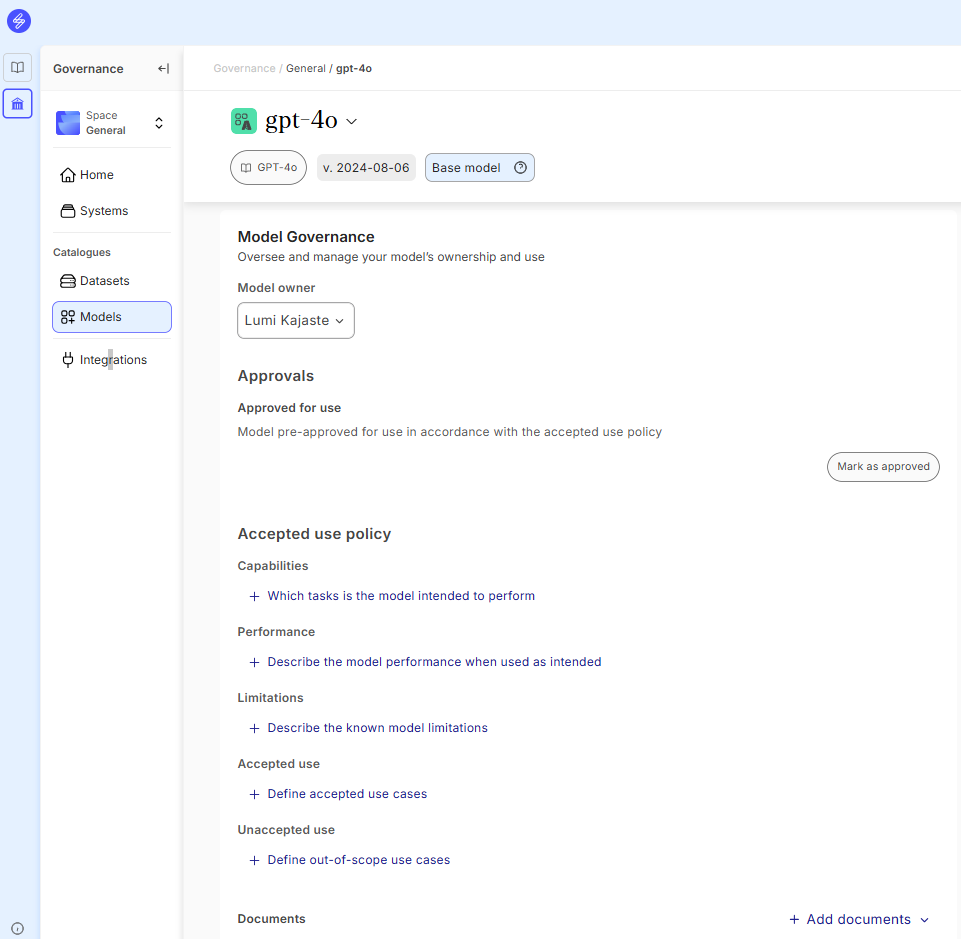
Step 5. Link risks
If the model is built on an existing model in the Saidot Model Library, model specific provider reported risks will be automatically connected to the model in the Model Catalogue. Model owner can add additional risks, for example related to model performance and use. These risks will be linked automatically to all systems using the model.
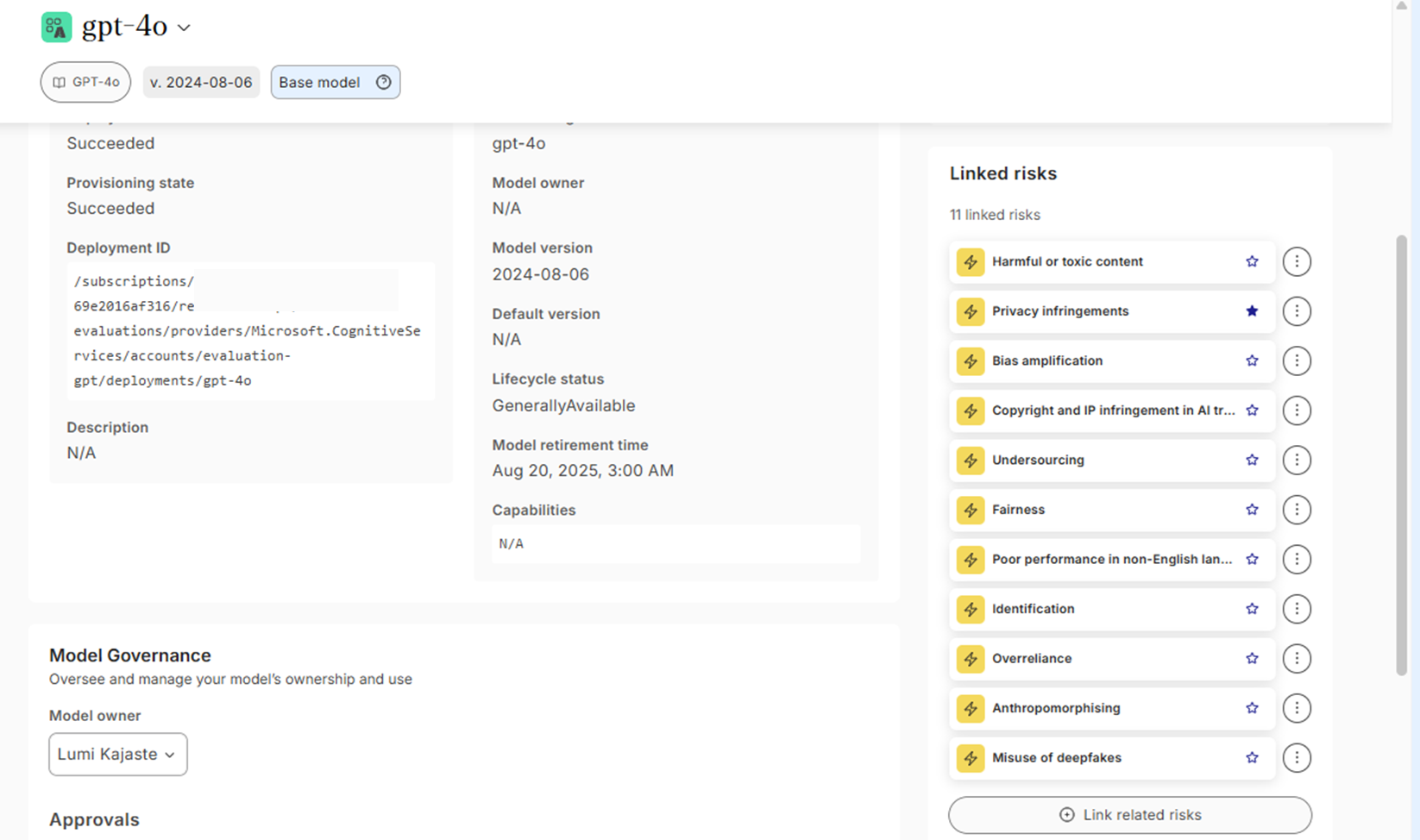
Step 6. Link model to System
Link the model to the AI system and describe the tasks. This will enable you to generate relevant evaluation plans for the model deployment.
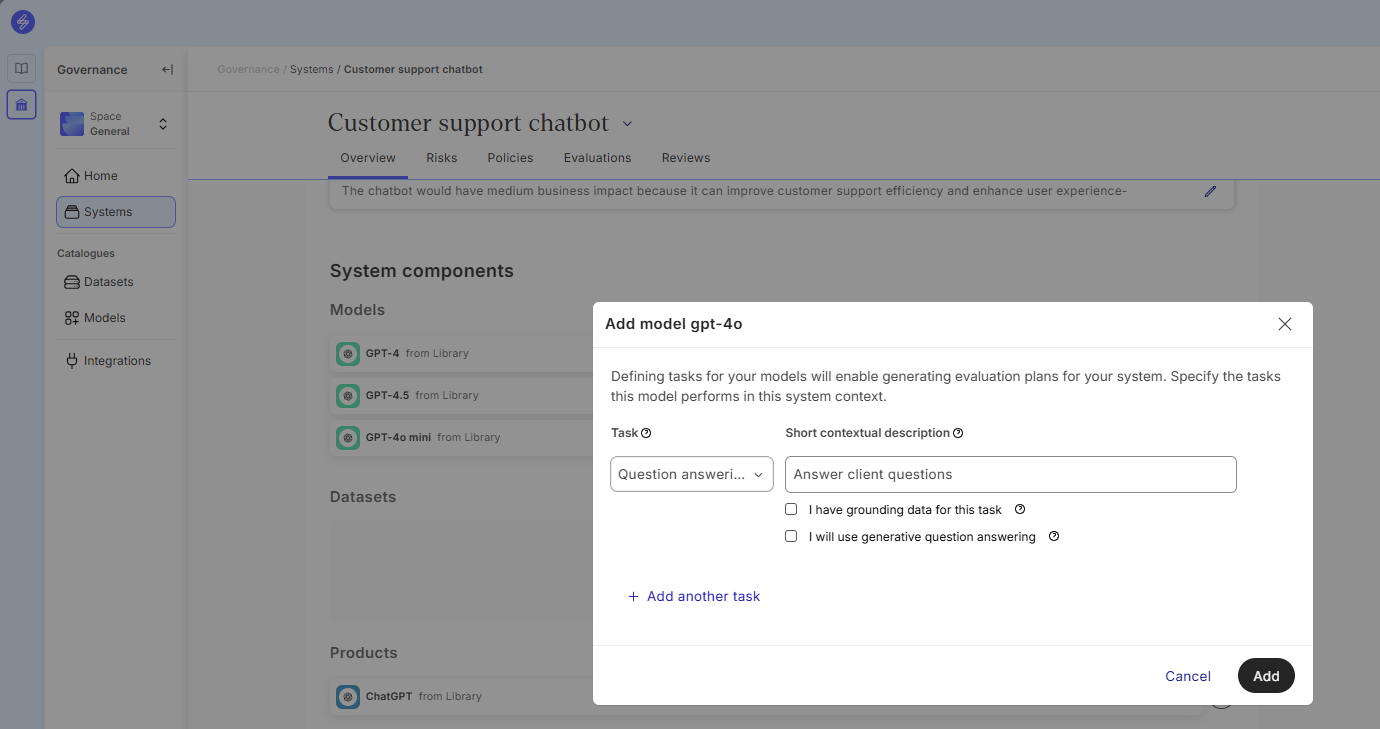
If datasets have not been linked before to the system components, datasets will be automatically linked from model to the system.
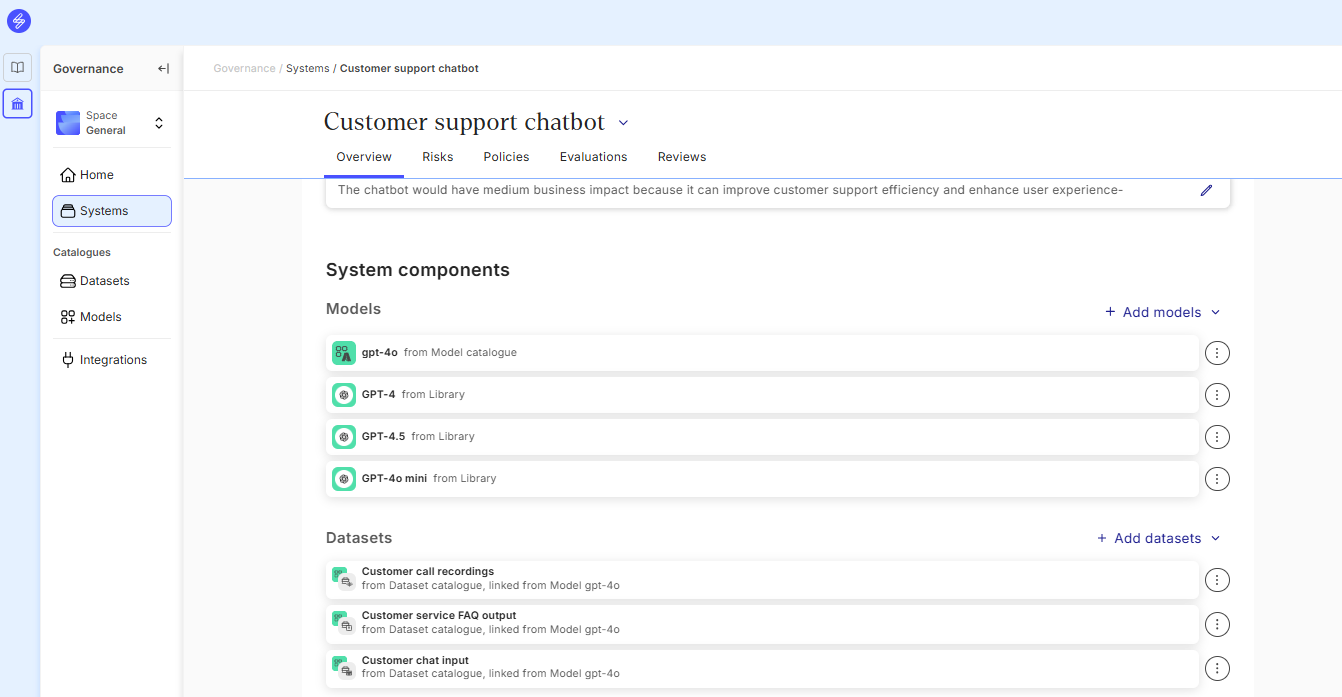
Step 7. Validate risk source
After linking the model from Model Catalogue to the system components, the model can be added as a risk source. Ensure that all model and context specific risks are identified and linked to the model correctly.
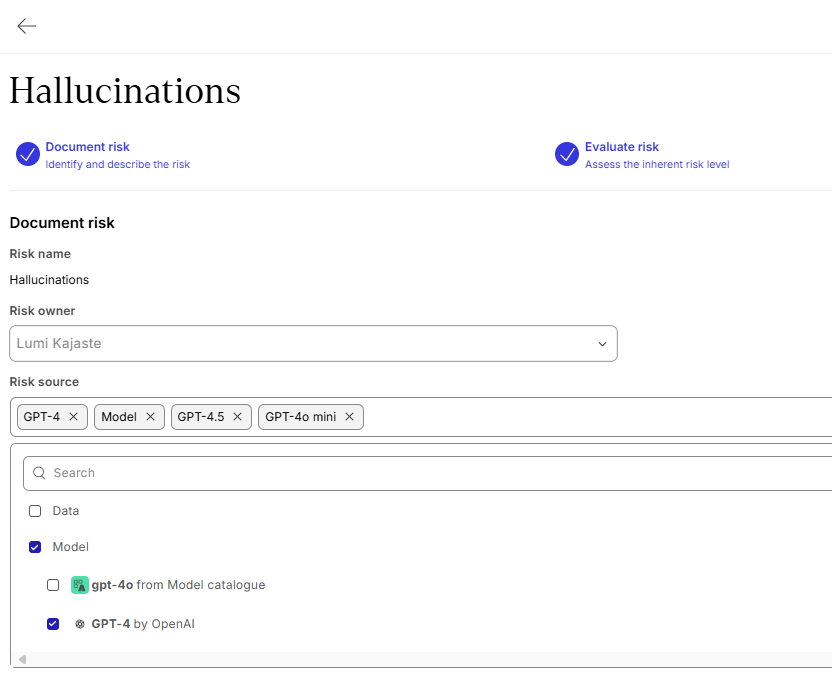
Soon, the risks identified for the model will be automatically added to the AI system.
